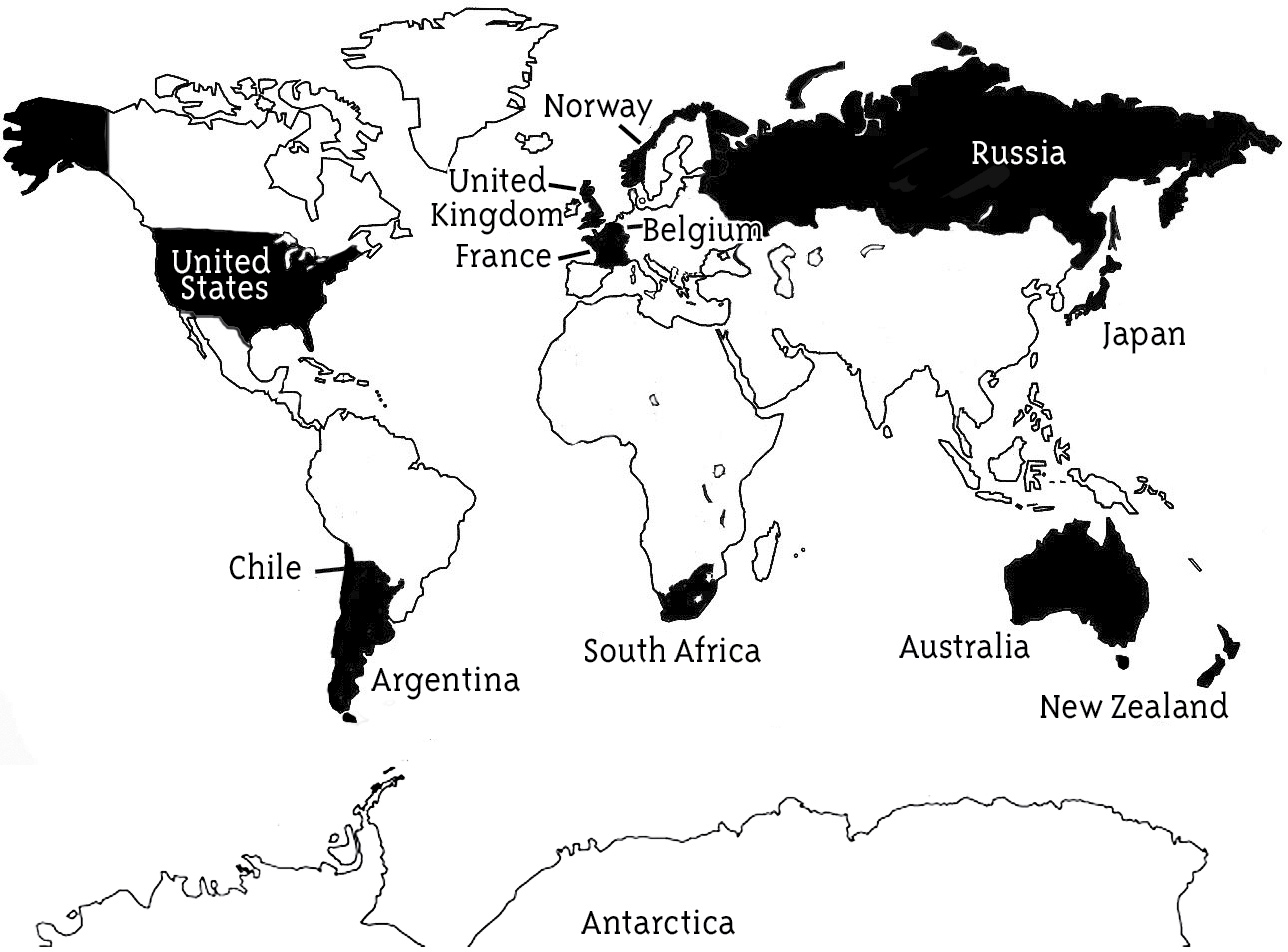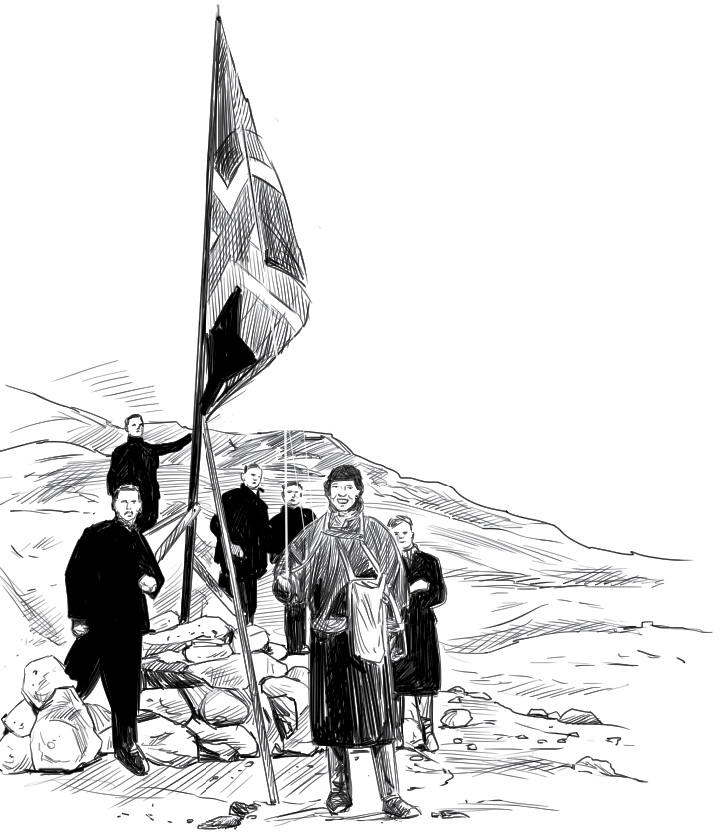CHAPTER 7
More to Explore
The “heroic age” of Antarctic exploration ended in the early 1900s. But since that time, people have continued to travel to Antarctica on adventurous expeditions. Scientists also travel there to learn more about the continent and our planet.
About thirty-two countries operate research stations in Antarctica. There are more than forty permanent stations on the continent. During the summer, there are about four thousand people at these stations. But that number drops to around one thousand in the winter months. The US operates three of the permanent research stations in Antarctica.
One is McMurdo Station. It was named for Archibald McMurdo. He traveled to Antarctica with Captain James Ross. The US opened this base in 1956.

McMurdo Station
McMurdo Station sits on a patch of black volcanic rock near the Ross Ice Shelf and Mount Erebus. The station is known as “Mac-Town,” and it is like a small city. There are about one hundred buildings at the site. Telephone, power, water, and sewer lines zigzag across the station. There are three airfields, a firehouse, a power plant, lots of warehouses and dormitories, and of course lots of research labs. There is also a barbershop, a post office, and a gym.

A few times a week, cargo planes drop off people and supplies. The planes leave with samples from scientific experiments. They also take away garbage and waste material.
McMurdo Station is operated by the US Antarctic Program, but scientists from all over the world live and work there. There are geologists who study rocks and minerals. Meteorologists come to study the weather and climate. Ecologists learn about the environment. Astronomers come to study the stars, planets, and objects in space. Glaciologists are there to study snow and ice—and there is a lot of it to study.
Every February or early March, the last plane flight leaves McMurdo Station. Just over one hundred people stay at the station for the winter. They keep the station running until it reopens in the summer. The workers who remain must withstand months of fierce winds, freezing temperatures, and complete darkness.
In 1957, scientists from around the world organized the International Geophysical Year (IGY). The purpose was for scientists to study the earth and share their findings. More than ten thousand scientists from sixty-seven countries participated. Around the world, about 2,500 IGY stations were set up. More than fifty of them were located on Antarctica. Researchers from twelve countries—Argentina, Australia, Belgium, Chile, France, Japan, New Zealand, Norway, Russia, South Africa, the United Kingdom, and the US—spent time researching everything from volcanoes and glaciers, to plant life on Antarctica.

Antarctic Adventures

Liv Arnesen

Mike Horn
The IGY made people recognize how important Antarctica is to the planet and how important it is to preserve it. In 1959, the twelve countries that had set up stations in Antarctica created the Antarctic Treaty. No country owns Antarctica and it is governed by rules set out in this treaty. The guidelines state that Antarctica will only be used for peaceful purposes, such as research, exploration, and tourism. Any information that scientists learn from their studies must be shared. No military forces will be allowed on Antarctica. And nuclear weapons will be prohibited on the continent.

Flag of the Antarctic Treaty
In October 2015, Iceland became the fifty-third country to sign the Antarctic Treaty. Scientists, researchers, and politicians around the world continue to recognize the importance of preserving this unique and special place on our planet.
Women in Antarctica

Caroline Mikkelsen